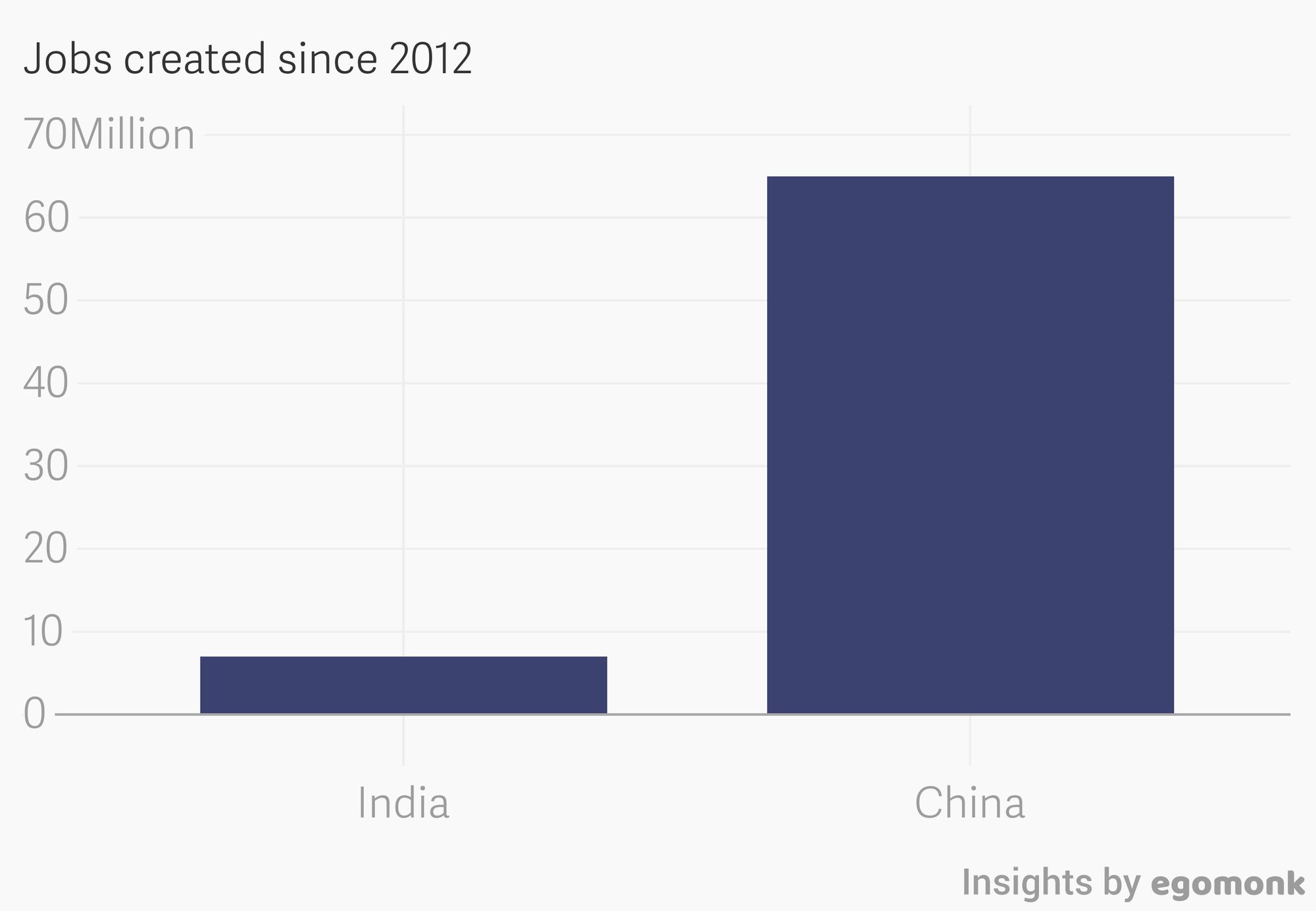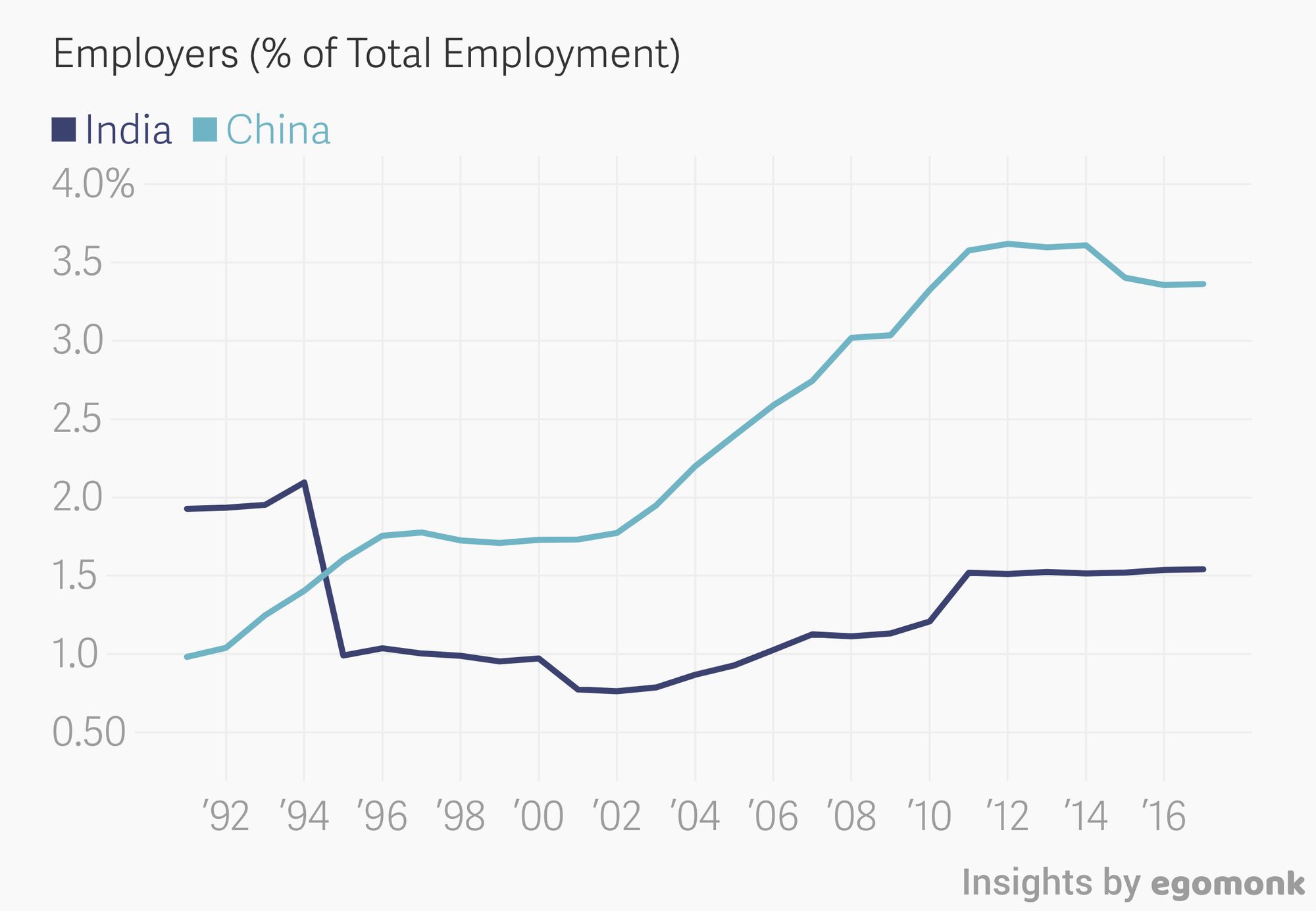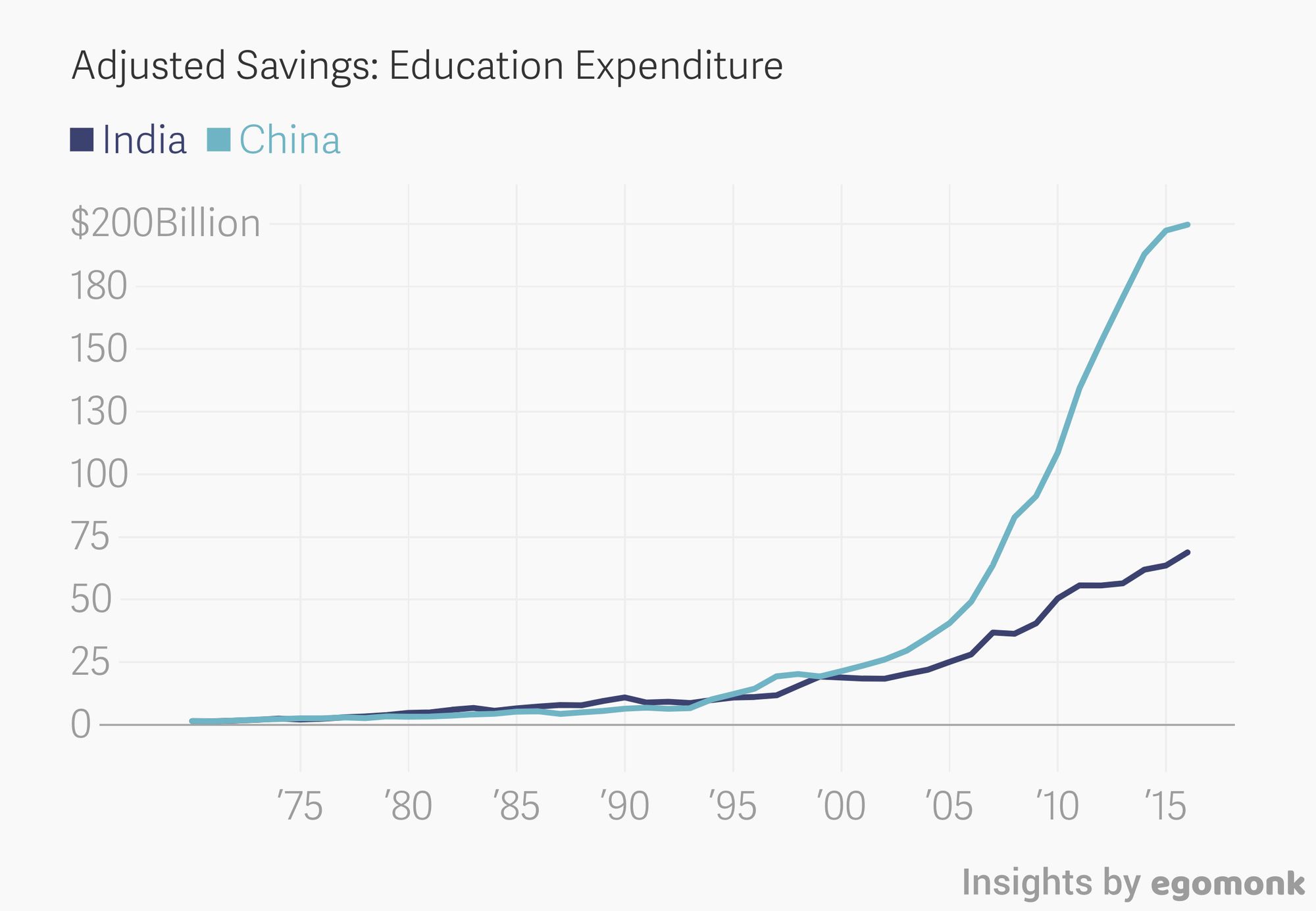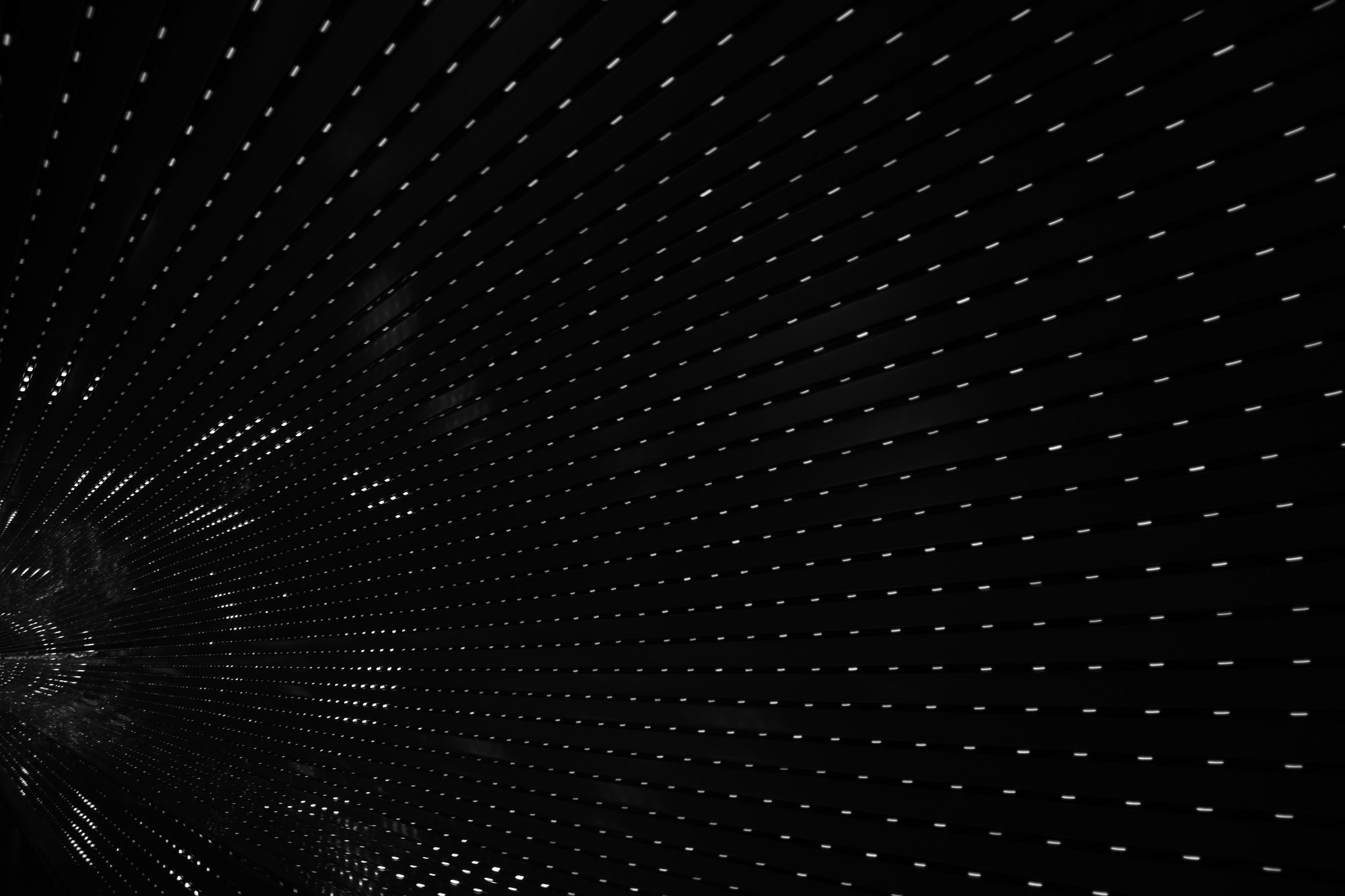An exploration of the differences between China and India.
China and India routinely get compared to each other because of their population sizes and geographical proximity but based on technological, social and economic trends they are wildly divergent!
India is at least a decade behind China in terms of core infrastructure development but what is more worrying is the persistent gap that has emerged in economic mobility, skills development and job creation. The Indian government must get its act together if it wants to deliver on its promise of long-term equitable progress. In the meanwhile, here are a few charts that highlight the disparity between the two giants.
1. China has a massive lead in millionaire headcount!

The success of the Chinese economy has not only lifted millions out of poverty but it has minted more than 800 new millionaires, in US dollar terms, every single day in 2017. Although this growth rate is cooling down to 18% in 2018 we see a similar economic phenomenon entirely missing in India!
2. Chinese household wealth is 6 times larger than India!

Indians are well-known for maintaining large holdings of gold, real estate and cash in the absence of effective social welfare but this culture of savings has recently mixed with a modern investment outlook. However, China is in a dominant position as its $29 Trillion household wealth war chest trumps India completely. We expect household wealth to grow to $7.1 Trillion by 2022 while China’s corpus will surge to $39 Trillion by then.
3. India needs Gross National Income growth to kick in!

Income is never equitably distributed and usually concentrated in the top 10–20% of the population. This is precisely why GNI per capita is an important socio-economic metric to track since it roughly indicates the average income of a country’s citizens. As can be evidenced above, Chinese income grew by leaps and bounds over the last 30 odd years while income in India was much more sluggish. We expect a similar exponential breakout to occur in India if a favourable economic environment is cultivated through strategic stimulus and responsible policy-making. We believe Chinese income will grow 4 to 5 times during this timeframe as it becomes the largest economy in the world.
4. Indian assets are much more stressed!

India’s NPA ratio may hit 11.1% by September 2018 and this is a particularly troubling situation given the context that 19% of the population still remains unbanked with the vast majority only beginning to tap into formal credit. The debt of just 12 companies constitutes 25% of all NPA in India which highlights how disconnected small and medium enterprise customers are from the issue. China’s debt fuelled economy is on a much tighter leash with just 1.7% of all assets being defined as non-performing thanks to a decade long restructuring exercise where asset-based securitisation became the norm. Although India’s Insolvency and Bankruptcy Code is proving to be helpful we believe existing risks could push stressed assets to 15%. However, Chinese exposure seems to be limited to 3% because of interventions by the CBRC.
5. China is the global leader in clean energy!

China’s achilles heel has always been the environmental compromises it has had to make in order to accelerate its economic output. However, it is now seriously committed to undoing this wrong by using its abundant capital and manufacturing prowess to scale clean renewable energy solutions. In 2017 alone China added 53GW of solar PV accounting for nearly 50% of the global market. Cumulative PV installations in China reached 130GW with the 2020 target being revised to 230 GW. India has already achieved its 20GW solar target a full 4 years ahead of schedule but to meet its new commitment of 100GW by 2022 it will require pumping in $160 billion. We consider such an investment essential for India and advise mandatory coupling of smart energy storage solutions with PV installation to accelerate rollout.
6. Female participation in labor is lagging in India!

China and India have a shared history of attempting to manage their growing populations in varied ways with limited success and serious social and demographic consequences. However, China has managed to leapfrog India in terms of encouraging its female population to contribute to the workforce. In 2017, for every 100 male members of the labor force there were 81 female workers in China as compared to only 34 in India. India must continue to invest in changing the social narrative of women and provide meaningful opportunities for them because it could unlock an additional $770 billion to its GDP by 2025. The lack of participation and high-skilled work for women poses a giant risk to India.
7. Food deficit is a very real and shared concern!

Malnutrition has been a major concern for both India and China for the past few decades as they worked to reduce the infant mortality rate and improve the overall health of their citizens. Unfortunately, India is still home to 190.7 million undernourished people and 38.4% of children under the age of five are stunted. China has almost eliminated urban poverty but 134.7 million are still undernourished! However, innovations such as Ying Yang Bao, a sachet of micronutrients, are helping the government to make China hunger-free. India needs to adopt a multi-pronged approach by expanding on nutrition schemes for adolescent girls; leveraging the unique identification project to bring transparency to the public distribution system comprised of 400,000 fair price shops; and implementing the National Food Security Act fully.
8. Billionaires aren’t growing the same way!

The count of billionaires in a nation isn’t just a trophy but, in our opinion, a real indicator of wealth generation since a lot of new income does get routed to their mega-corporations. China is already home to more billionaires than anywhere else on the planet and will continue to outpace the US the coming few decades. The Chinese are also entering this rarified club at an average age of 55 years which is 6 and 7 years earlier than their American and European peers respectively. India is doing nowhere as well in age threshold, billionaire count and total net worth with China adding more new billionaires in the last 12 months than there are Indian billionaires.
9. India is facing a serious job crunch!

The greatest promise a fast growing economy brings to its people is jobs which are widely believed to be gateways of economic mobility. They allow people to permanently escape poverty and provide opportunities to the next generation. In this measure, China has lived up to its potential by creating 65 million jobs in the past 6 years which is happens to be the entire population of France! In the same time frame India has produced a meagre 7 million jobs and its ability to consistently create jobs is suspect at best. It must particularly improve at providing high-quality employment opportunities since most new jobs have belonged to low-skilled categories which are at risk to be automated.
10. India can learn from China about entrepreneurship!

Startups and SMEs form the heart of Chinese and Indian commerce but China is leading at scale with a wider base of employers, better gender diversity and significantly larger number of companies. According to the Administration for Industry and Commerce in China there are currently 77,469,000 companies! India on the other hand only has 1.13 million companies which indicates the severe lack of depth in its manufacturing, technology and services industry.
11. China’s long-term dominance is linked to education spending!

China had set a target of minimum 4% GDP spend on education in 2012 and has since then consistently beat the mark. It understands the needs for being agile when it comes to skill development as can be evidenced by its use and strong encouragement of AI in education across all age groups. China’s state policy has made clear its desire to be the global leader in AI innovation by 2030. It wants to catapult the fledgling industry’s worth to more than $150 billion and has already commissioned a $2 billion AI research park in Beijing. In this context, India is a laggard with only a third of China’s annual operating expenditure towards education being allocated. Furthermore, its inability to innovate in teaching methodology and course curriculum is a major reason for Indian students to not realize their complete potential.





